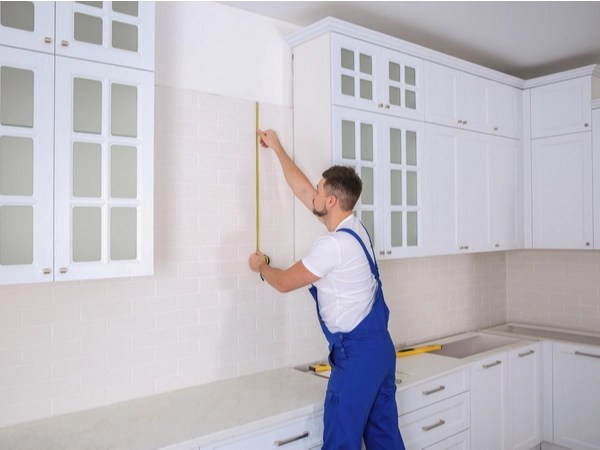How Much Space Between Kitchen Counter And Wall Cabinets
How Much Space Between Kitchen Counter And Wall Cabinets
When designing a kitchen, there are many factors to consider, including the layout of the cabinets and appliances, the type of countertop you want, and the overall style of the space.
One important consideration is the amount of space between the kitchen counter and the wall cabinets. This space is known as the "backsplash," and it can have a big impact on the look and feel of your kitchen.
What is the standard backsplash height?
The standard backsplash height is between 4 and 6 inches. This height is high enough to protect the wall from splashes and splatters, but it is not so high that it will block your view of the stove or oven.
If you are installing a tile backsplash, you will need to make sure that the tiles are the correct size to fit within the backsplash height.
What are the different types of backsplashes?
There are many different types of backsplashes available, including tile, glass, stone, and metal. The type of backsplash you choose will depend on the style of your kitchen and your personal preferences.
Tile backsplashes are a popular choice because they are durable and easy to clean. They are also available in a wide variety of colors and styles, so you can find a backsplash that matches your kitchen décor.
Glass backsplashes are another popular choice. They are easy to clean and can add a touch of elegance to your kitchen. Glass backsplashes are available in a variety of colors and finishes, so you can find one that matches your kitchen décor.
Stone backsplashes are a durable and luxurious option. They are available in a variety of colors and finishes, so you can find a backsplash that matches your kitchen décor.
Metal backsplashes are a modern and stylish option. They are easy to clean and can add a touch of shine to your kitchen. Metal backsplashes are available in a variety of colors and finishes, so you can find one that matches your kitchen décor.
How to choose the right backsplash for your kitchen
When choosing a backsplash for your kitchen, there are a few things to keep in mind:
- The style of your kitchen: The backsplash should complement the style of your kitchen. If you have a traditional kitchen, you may want to choose a tile or stone backsplash. If you have a modern kitchen, you may want to choose a glass or metal backsplash.
- The color of your kitchen: The backsplash should match or complement the color of your kitchen cabinets and countertops. If you have white cabinets and countertops, you may want to choose a white or light-colored backsplash. If you have dark cabinets and countertops, you may want to choose a dark-colored backsplash.
- Your personal preferences: Ultimately, the backsplash you choose should be one that you love and that reflects your personal style.
Installing a backsplash
Installing a backsplash is a relatively easy project that can be completed in a few hours.
To install a backsplash, you will need the following tools and materials:
- A level
- A measuring tape
- A pencil
- A notched trowel
- Thin-set mortar
- Backsplash tiles
- Grout
- A grout float
Once you have gathered your tools and materials, you can follow these steps to install your backsplash:
- Measure and mark the wall: Use a level and a measuring tape to mark the height of the backsplash on the wall. Draw a level line along the mark.
- Apply thin-set mortar to the wall: Use a notched trowel to apply a thin layer of thin-set mortar to the wall. Start at the bottom of the wall and work your way up.
- Set the tiles: Press the tiles into the thin-set mortar. Use a level to make sure that the tiles are level. Use a spacer to ensure that the tiles are spaced evenly.
- Grout the tiles: Once the tiles are set, you can grout them. Use a grout float to apply the grout to the joints between the tiles. Wipe away any excess grout with a damp sponge.
- Seal the grout: Once the grout is dry, you can seal it. This will help to protect the grout from stains and moisture.

Height Between Upper Cabinets And Counters Kitchen Elevation

What Gap Do I Need Between The Worktop And Bottom Of Wall Units

Six Key Measurements To Help With The Kitchen Design

Best Practices For Kitchen Space Design Fix Com

Cabinet Countertop Clearance To Be Mindful Of When Considering Wall Cabinets

Best Practices For Kitchen Space Design Fix Com

10 Kitchen Space Rules To Follow Immediately For A Phenomenal Set Up Arch2o Com

The 39 Essential Rules Of Kitchen Design

How High Upper Cabinets Should Be From Your Floor And Countertop

Kitchen Design Tips Part 2
Be the first to leave a comment. Don’t be shy.